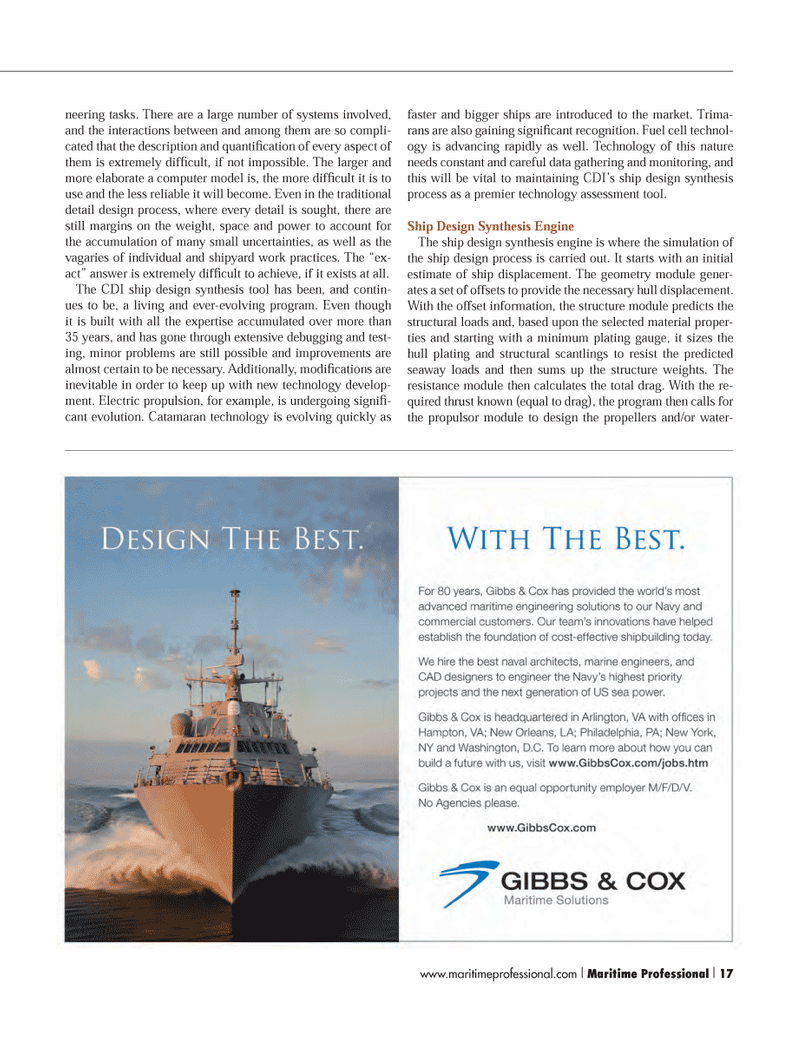
Page 17: of Maritime Logistics Professional Magazine (Q1 2013)
Maritime Risk
Read this page in Pdf, Flash or Html5 edition of Q1 2013 Maritime Logistics Professional Magazine
neering tasks. There are a large number of systems involved, and the interactions between and among them are so compli-cated that the description and quantiÞ cation of every aspect of them is extremely difÞ cult, if not impossible. The larger and more elaborate a computer model is, the more difÞ cult it is to use and the less reliable it will become. Even in the traditional detail design process, where every detail is sought, there are still margins on the weight, space and power to account for the accumulation of many small uncertainties, as well as the vagaries of individual and shipyard work practices. The Òex- actÓ answer is extremely difÞ cult to achieve, if it exists at all. The CDI ship design synthesis tool has been, and contin-ues to be, a living and ever-evolving program. Even though it is built with all the expertise accumulated over more than 35 years, and has gone through extensive debugging and test- ing, minor problems are still possible and improvements are almost certain to be necessary. Additionally, modiÞ cations are inevitable in order to keep up with new technology develop- ment. Electric propulsion, for example, is undergoing signiÞ -cant evolution. Catamaran technology is evolving quickly as faster and bigger ships are introduced to the market. Trima- rans are also gaining signiÞ cant recognition. Fuel cell technol- ogy is advancing rapidly as well. Technology of this nature needs constant and careful data gathering and monitoring, and this will be vital to maintaining CDIÕs ship design synthesis process as a premier technology assessment tool.Ship Design Synthesis EngineThe ship design synthesis engine is where the simulation of the ship design process is carried out. It starts with an initial estimate of ship displacement. The geometry module gener- ates a set of offsets to provide the necessary hull displacement. With the offset information, the structure module predicts the structural loads and, based upon the selected material proper- ties and starting with a minimum plating gauge, it sizes the hull plating and structural scantlings to resist the predicted seaway loads and then sums up the structure weights. The resistance module then calculates the total drag. With the re- quired thrust known (equal to drag), the program then calls for the propulsor module to design the propellers and/or water- www.maritimeprofessional.com I Maritime Professional I 17MP #1 1-17.indd 17MP #1 1-17.indd 172/22/2013 10:36:01 AM2/22/2013 10:36:01 AM

 16
16

 18
18
